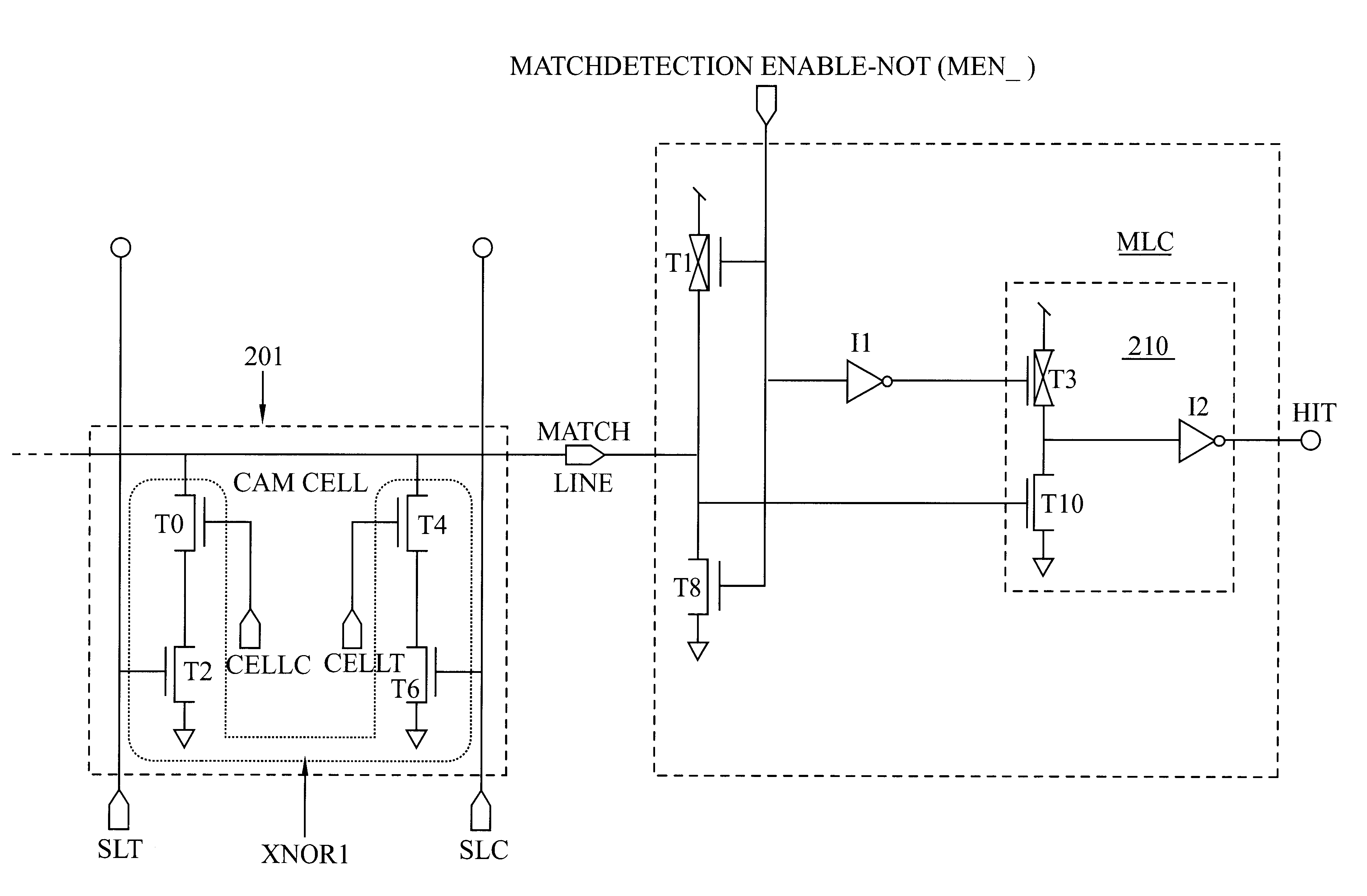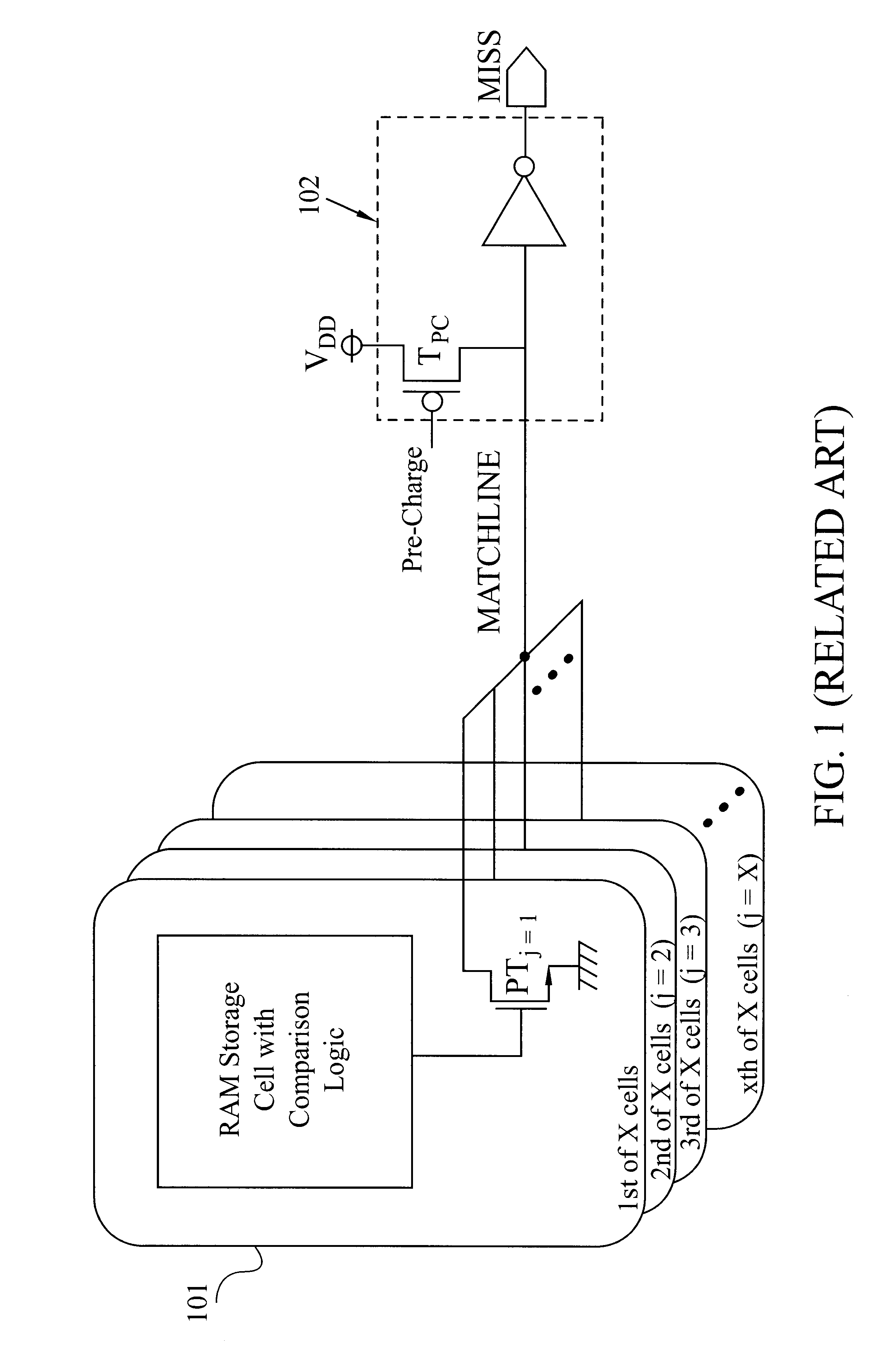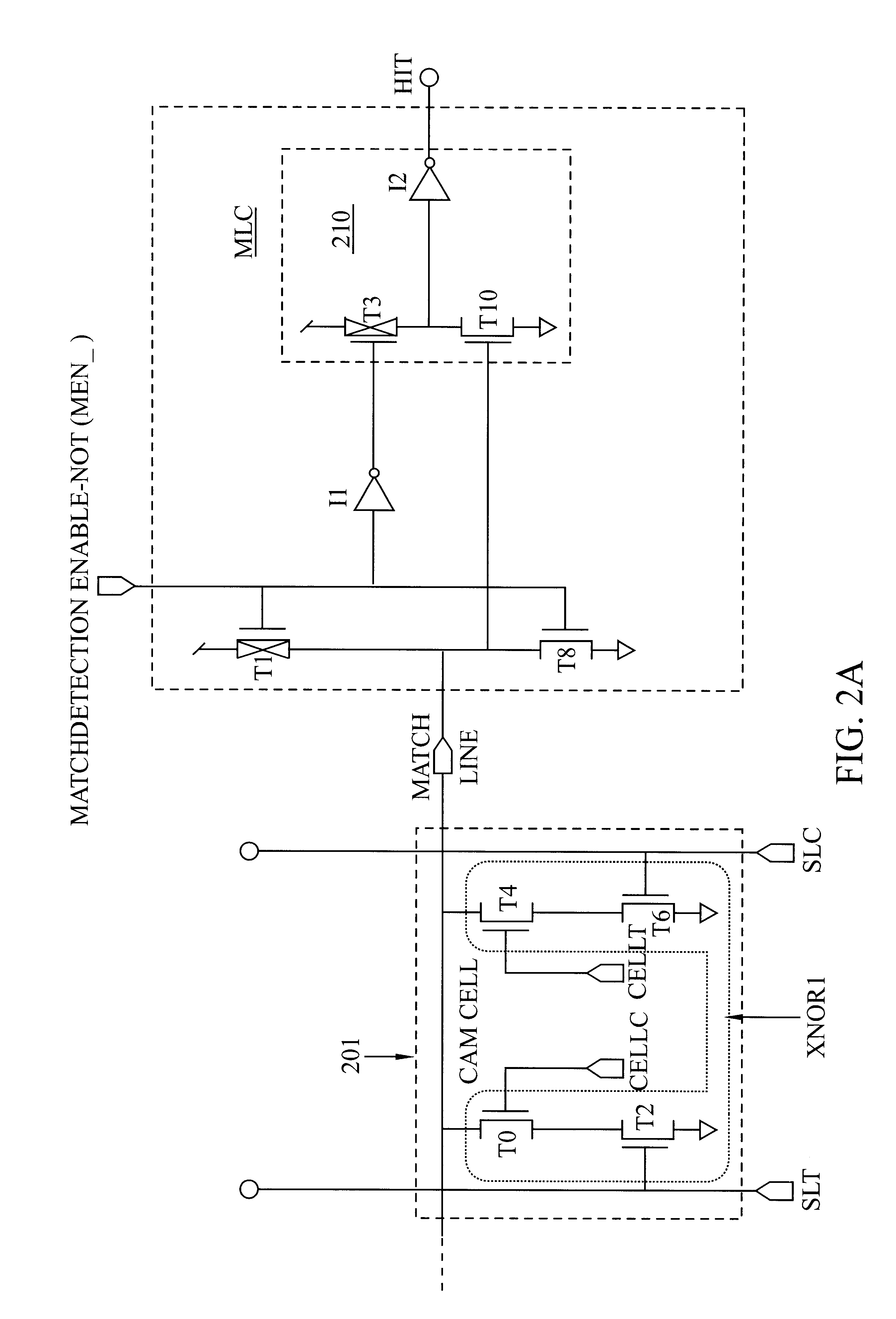Low power CAM match line circuit
a low-power, cam-based technology, applied in the direction of information storage, static storage, digital storage, etc., can solve the problems of consuming multiple watts of power during search operation, unable to prevent the energy consumed in each miss from increasing in proportion with the size (i.e., width x) of words, and large cam memory arrays of related ar
- Summary
- Abstract
- Description
- Claims
- Application Information
AI Technical Summary
Problems solved by technology
Method used
Image
Examples
Embodiment Construction
The invention provides, inter alia, a Match Line Controller including an improved Match-Detection Circuit, for detecting MATCH-ing entries in a Content Addressable Memory array. A CAM array 221, as depicted in FIG. 2b, storing N data words (i.e., having N "entries") has N Match Lines (e.g., ML.sub.0, ML.sub.1, ML.sub.2, . . . ML.sub.N1 ; where N=Y.times.L; Y is an integer representing the number of entries that are controlled per Match Line Controller circuit; L is an integer representing the number of Match Line Controller circuits per CAM array), one Match Line for each entry, each entry having a unique n-bit (n=BASE2LogN) address within the CAM. In an embodiment of the invention, each entry and Match Line combination is coupled to a Match Line Controller MLC that includes a Match-Detection Circuit 210, as depicted in FIG. 2a.
FIG. 2a depicts an embodiment of the inventive Match Line Controller (MLC) including an improved Match-Detection Circuit (210) coupled to a Match Line that i...
PUM
 Login to View More
Login to View More Abstract
Description
Claims
Application Information
 Login to View More
Login to View More - R&D
- Intellectual Property
- Life Sciences
- Materials
- Tech Scout
- Unparalleled Data Quality
- Higher Quality Content
- 60% Fewer Hallucinations
Browse by: Latest US Patents, China's latest patents, Technical Efficacy Thesaurus, Application Domain, Technology Topic, Popular Technical Reports.
© 2025 PatSnap. All rights reserved.Legal|Privacy policy|Modern Slavery Act Transparency Statement|Sitemap|About US| Contact US: help@patsnap.com



